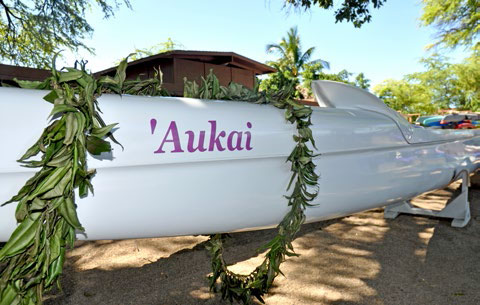The outrigger canoe — the vessel in which the ancient Polynesian people explored the Pacific — was simple in its design. “A seaworthy vessel carved from trees with stone tools, assembled with lashings of fiber, and rigged with sails of plaited leaves,” is how renowned Hawaiian artist and historian Herb Kane (1928- 2011) described it in his seminal 1976 work Voyage, The Discovery of Hawai`i. But simple and primitive though the original canoes may have been, they played an outsized role in the history of Polynesia.
In addition to long-distance voyaging, Kane also surmised that the canoe contributed to the physical appearance of the Hawaiian people: “Favored for selection for a voyage, and for survival on a long exploration, were persons with powerful muscle, stamina, and ample fat to sustain the body through times of hunger and insulate it against deadly exposure to wind and spray. The survivors of a voyage, once settled on a newly discovered island, would form the ancestor pool for future generations of explorers. Thus, by their large musculature and size, the Polynesians may be identified as the Children of the Long Canoes.”

